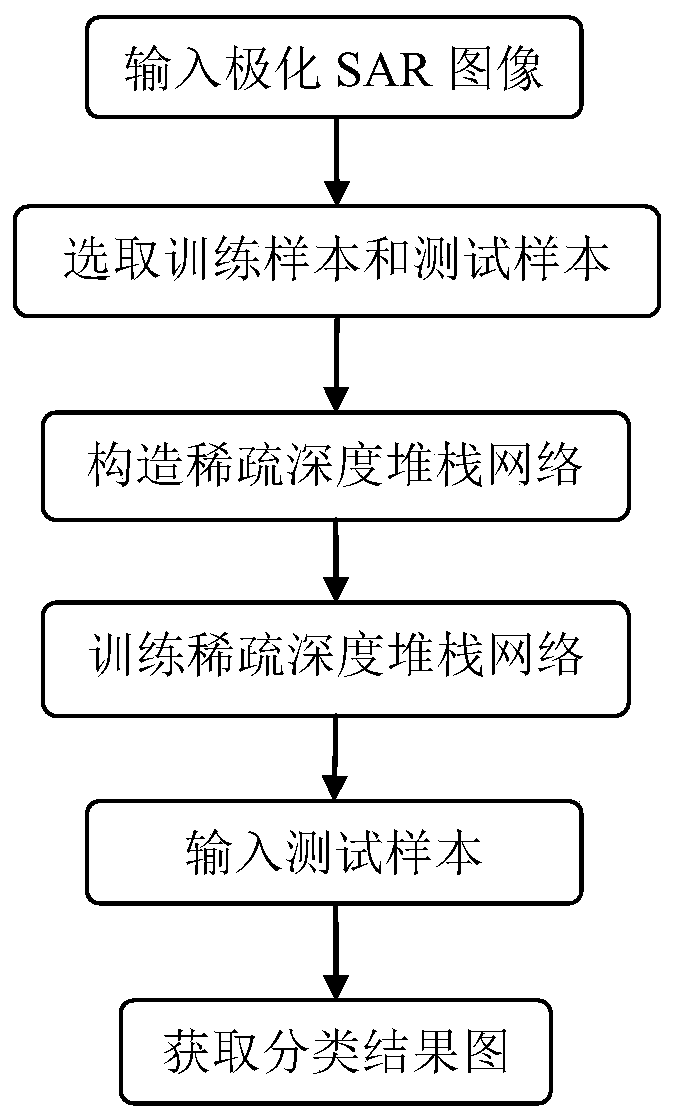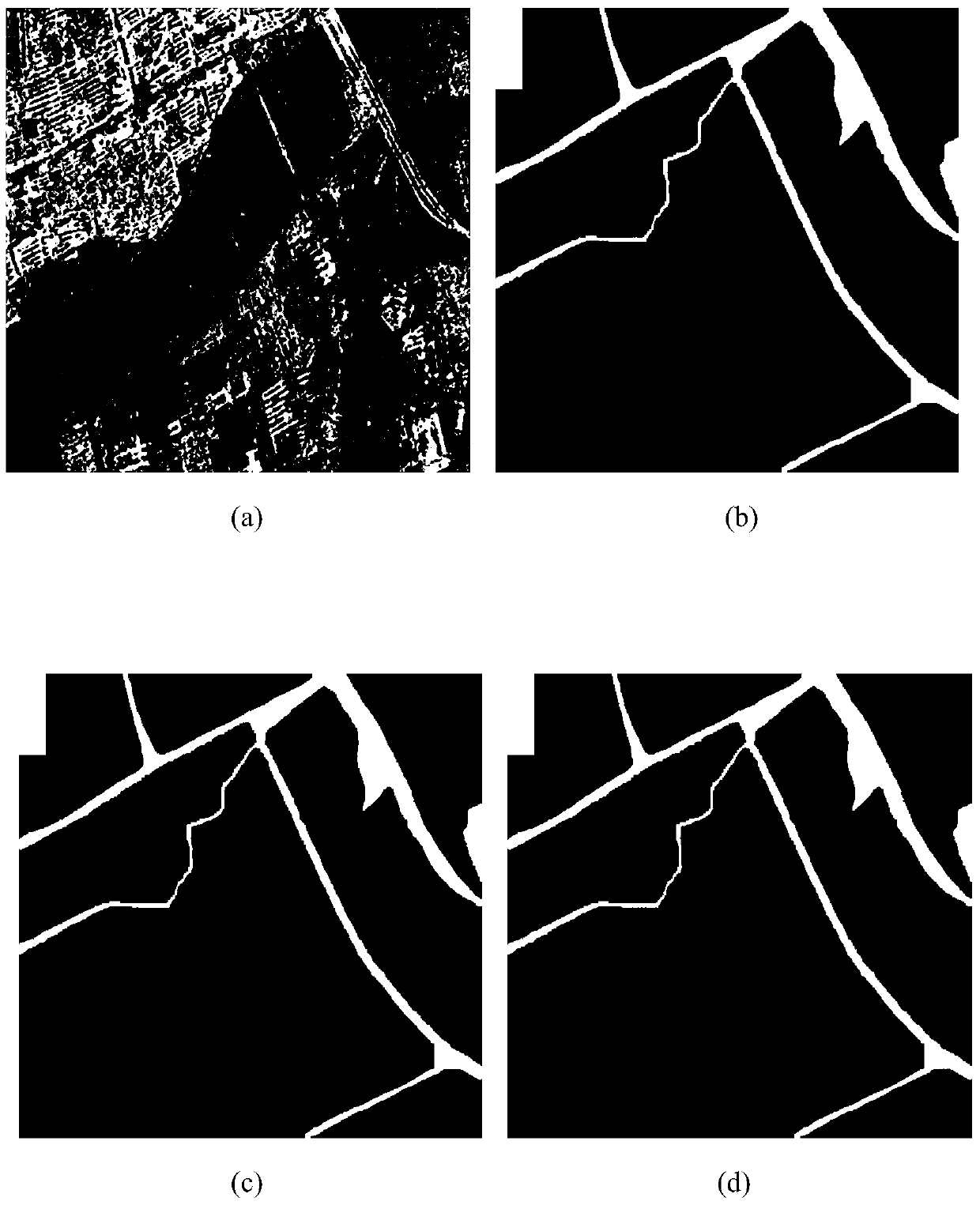Polarized SAR Image Classification Method Based on Sparse Deep Stack Network
A classification method and sparse technology, applied in the field of image processing, can solve the problems of low classification accuracy, achieve the effects of high classification accuracy, overcome high time complexity, and improve classification efficiency
- Summary
- Abstract
- Description
- Claims
- Application Information
AI Technical Summary
Problems solved by technology
Method used
Image
Examples
Embodiment Construction
[0049] The present invention will be further described below in conjunction with the accompanying drawings.
[0050] refer to figure 1 , the specific implementation steps of the present invention are as follows:
[0051] Step 1. Input a polarimetric SAR image.
[0052] Input a coherence matrix of a polarization SAR image to be classified, its size is a matrix of 3×3×N, and N represents the number of pixels in the polarization SAR image.
[0053] Step 2. Select training samples and test samples.
[0054] The real and imaginary parts of the six upper triangular elements of the coherence matrix are used as the features of the polarimetric SAR image to form a 9×N sample set.
[0055] 10% of the samples are randomly selected from the sample set as training samples, and the remaining 90% of the samples are used as test samples.
[0056] Step 3. Construct a sparse deep stack network.
[0057] The three single-layer sparse deep networks, the positional relationship of the upper l...
PUM
 Login to View More
Login to View More Abstract
Description
Claims
Application Information
 Login to View More
Login to View More - R&D
- Intellectual Property
- Life Sciences
- Materials
- Tech Scout
- Unparalleled Data Quality
- Higher Quality Content
- 60% Fewer Hallucinations
Browse by: Latest US Patents, China's latest patents, Technical Efficacy Thesaurus, Application Domain, Technology Topic, Popular Technical Reports.
© 2025 PatSnap. All rights reserved.Legal|Privacy policy|Modern Slavery Act Transparency Statement|Sitemap|About US| Contact US: help@patsnap.com



